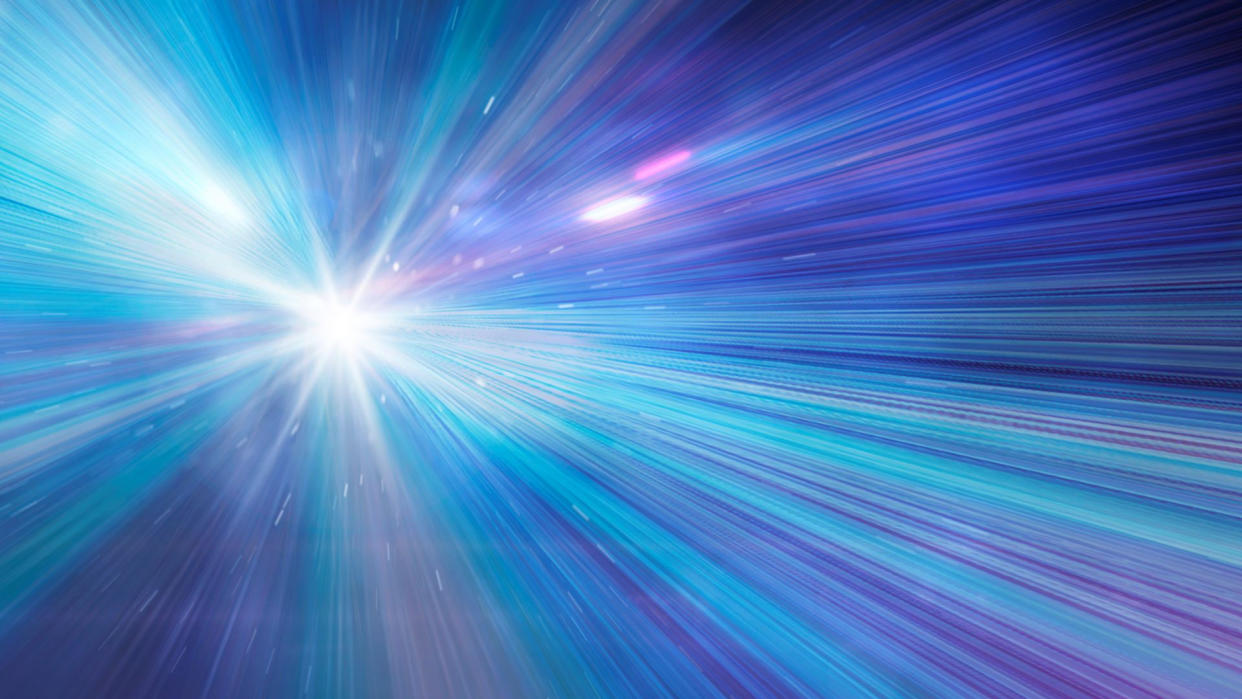'Air showers' could help reveal cosmic rays' mysterious source

Astronomers have a new way to study energetic particles that constantly bombard Earth from space, called cosmic rays.
The new method proposes the detailed analysis of showers of secondary particles created when cosmic rays belt Earth's atmosphere, as a lens to better understand them.
Cosmic rays are difficult to track back to a source because the charged particles that comprise them are deflected time and again by magnetic fields they encounter as they travel through space at near the speed of light. That means that their sources, which lie outside the solar system, tend to be shrouded in mystery.
Related: What are cosmic rays?
Suspects for cosmic ray sources include supernovas, but these particles seem to be too energetic to have been launched even by the explosion of massive stars. Other suspects include active galactic nuclei or quasars powered by feeding supermassive black holes, gamma-ray bursts, or even exotic dark matter, but astronomers have yet to find a smoking gun that points to these sources definitively.
What is better understood is what happens when these charged cosmic particles belt Earth. When these charged particles strike particles in our planet's atmosphere, they create a huge "air shower" of secondary particles that rain down to Earth's surface. When thousands, millions or even billions of these particles hit the ground, it's called an extensive air shower.
In the new study, scientists found a way of using precise observations of these particle showers taken with the Subaru Telescope, situated atop the Mauna Kea volcano in Hawaii, to learn more about them and the cosmic rays that trigger them.
Extensive air showers ain't noise pollution
The bright tracks that extensive air showers create as they pass in front of telescopes are often a hindrance to astronomy, ruining observations of the solar system, the Milky Way and beyond. But the research team decided to treat these streaks of light as more than pesky "noise" ruining their otherwise pristine data.
The researchers analyzed around 17,000 images captured between 2014 and 2020, pinpointing 13 images that contained extensive air showers. These images showed a far greater number of particle tracks than the team had expected to see — and this could hint at a way to decode the mystery of cosmic rays.
"With conventional observation methods, it is challenging to distinguish between the types of particles that constitute extensive air showers," team leader and Osaka Metropolitan University scientist Toshihiro Fujii said in a statement. "Our method, on the other hand, has the potential to determine the nature of individual particles."
RELATED STORIES:
— Cosmic rays pose dangers to frequent flyers. This radiation detector could help.
— Supernova 'wreckage' blasts out cosmic rays in deep space
—Cosmic rays are starting to tear a Milky Way satellite galaxy apart
Scientists think cosmic rays are composed mainly of protons (90%) — the atomic nuclei of hydrogen, the universe's lightest element — helium nuclei (9%) and other particles, including electrons and the odd atomic nuclei as heavy as lead (1%). The new study could deliver a better way to discover the particle ingredients of air showers and, in turn, cosmic rays, which could then help determine their source, team members said.
"By integrating our method with conventional approaches, we hope to advance our understanding of extensive air showers," Fujii concluded. "This technique may allow us to search for dark matter or other exotic particles, offering additional insights into the transition of the universe into a matter-dominated era."
The team's research was published Oct. 12 in the journal Scientific Reports.

